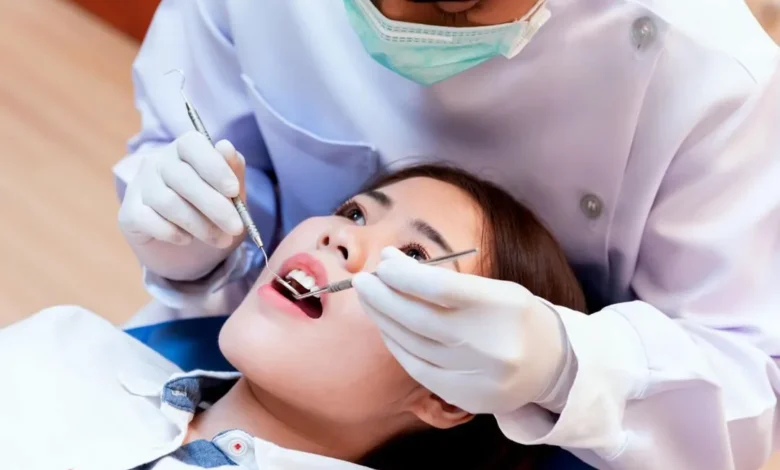How Restorative Dental Procedures Have Evolved in 2024

Introduction to Restorative Dental Procedures
Welcome to the exciting world of restorative dental procedures, where innovation and technology come together to transform smiles and boost confidence. In this blog post, we will explore how these procedures have evolved over time, thanks to advancements in dentistry that have revolutionized the way we approach oral health. So sit back, relax, and let’s dive into the fascinating journey of restorative dental care in 2024!
Evolution of Restorative Dentistry
The evolution of restorative dentistry has been a fascinating journey marked by significant advancements over the years. From traditional fillings and crowns to innovative materials and techniques, the field has seen remarkable progress in restoring dental health.
In the past, restorative procedures often involved invasive treatments that required extensive drilling and removal of tooth structure. However, with technological advancements, dentists can now offer minimally invasive options that preserve more of the natural tooth while achieving excellent results.
With the introduction of digital imaging technologies like 3D scanning and printing, dentists can create precise custom-made restorations for each patient. This personalized approach ensures optimal fit, function, and aesthetics for every individual’s unique needs.
As restorative dentistry continues to evolve, we can expect further enhancements in materials, techniques, and treatment outcomes. The future holds exciting possibilities for improving oral health through advanced restorative procedures tailored to meet each patient’s specific requirements.
Advancements in Technology
Advancements in technology have revolutionized the field of restorative dentistry. With the introduction of digital imaging, 3D printing, and CAD/CAM systems, dentists can now create precise restorations with improved accuracy and efficiency.
Digital scanning allows for detailed images of a patient’s teeth, eliminating the need for messy traditional impressions. This not only enhances patient comfort but also ensures better-fitting restorations. Additionally, computer-aided design and manufacturing technologies enable same-day crowns and bridges to be fabricated in-office, saving patients time and multiple appointments.
Furthermore, advancements in materials science have led to the development of stronger and more aesthetic dental materials. From tooth-colored fillings to ceramic crowns, patients now have a wide range of options to choose from that blend seamlessly with their natural teeth.
These technological advancements continue to push the boundaries of what is possible in restorative dental procedures.
Minimally Invasive Procedures
As dentistry continues to evolve, so do the techniques used in restorative procedures. One significant advancement in recent years is the shift towards minimally invasive procedures. These methods focus on preserving as much of the natural tooth structure as possible while still effectively treating dental issues.
By utilizing advanced technology and techniques, dentists can now perform procedures with less discomfort for patients and faster recovery times. Minimally invasive approaches often involve smaller incisions, reduced drilling, and more conservative treatment plans overall.
Not only do these methods benefit the patient’s physical well-being, but they also contribute to better long-term oral health outcomes. With less trauma to the teeth and surrounding tissues, there is a decreased risk of complications post-procedure.
Minimally invasive procedures represent a positive step forward in restorative dentistry by prioritizing patient comfort and optimizing treatment results.
Personalized Treatment Plans
In the world of restorative dental procedures, personalized treatment plans have become increasingly vital. Each patient is unique, with their own set of dental needs and goals. Gone are the days of one-size-fits-all approaches; now, dentists tailor treatments to suit individual requirements.
By taking into account factors like oral health history, lifestyle habits, and aesthetic preferences, dentists can craft a plan that meets specific needs effectively. This tailored approach not only enhances results but also improves patient satisfaction and comfort throughout the process.
Personalized treatment plans may involve a combination of restorative techniques such as fillings, crowns, implants, or veneers. By customizing these interventions to fit each patient’s situation accurately, outcomes tend to be more successful and long-lasting.
Moreover, this level of personalization fosters a sense of collaboration between patients and their dental team. It empowers individuals to take an active role in their oral health journey while feeling confident in the care they receive from start to finish.
The Future of Restorative Dental Procedures
As technology continues to advance at a rapid pace, the future of restorative dental procedures looks promising. Innovations in materials and techniques are revolutionizing the way dentists approach treatment.
One exciting development is the use of 3D printing in creating custom dental implants and prosthetics with unparalleled precision. This not only improves the fit and comfort for patients but also reduces treatment time significantly.
Additionally, advancements in regenerative medicine show potential for growing natural teeth to replace missing ones, offering a more permanent solution compared to traditional implants or bridges.
Tele-dentistry is another trend on the rise, allowing patients to receive remote consultations and monitoring from their homes. This can improve access to care for those in remote areas or with limited mobility.
With these exciting developments on the horizon, restorative dental procedures are poised to become even more efficient and personalized in the years to come.
Conclusion
Restorative dental procedures have come a long way over the years, thanks to continuous advancements in technology and techniques. Patients now have access to minimally invasive treatments that offer more personalized solutions for their dental issues.
As we look towards the future of restorative dentistry, it’s clear that even more innovative approaches will continue to emerge, providing patients with improved outcomes and experiences. By staying informed about the latest developments in the field, both patients and dental professionals can work together to achieve optimal oral health.
Remember, maintaining regular dental check-ups and following good oral hygiene practices are essential for preventing serious dental problems. With the evolution of restorative dental procedures, taking care of your smile has never been easier or more effective. Embrace these changes and enjoy a healthier, happier mouth for years to come.



